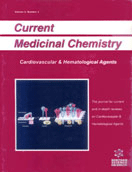Abstract
A large number of anticoagulant polysaccharides from marine algae have been isolated and characterized. Algal anticoagulant polysaccharides exert their anticoagulant activity through potentiating antithrombin III (AT III) and / or heparin cofactor II (HC II) that are important endogenous inhibitors, called SERPIN. The anticoagulant mechanism is the one by which heparin, heparin sulfate and dermatan sulfate exert their activity. On the other hand, some algal anticoagulant polysaccharides exert anticoagulant activity through directly inhibiting fibrin polymerization and / or thrombin activity without potentiating AT III and HC II. Furthermore, new functions of algal anticoagulant polysaccharides have been discovered recently, as it has been shown that heparin and its derivatives have important roles in many biological processes. Algal anticoagulant polysaccharides activate fibrinolysis system and modulate endothelial cell functions. Our recent studies conducted on marine algal biologically active compounds have shown anti-platelet and anticoagulant proteins and fibrinolytic enzymes. Therefore, algal polysaccharides and proteins have attracted the attention of biomedical scientists. This article provides a short review of algal anticoagulants and recent developments in this area. It focuses on their biological activities, structures, and potent uses as medical agents.
Keywords: marine algae, anticoagulant, fibrinolysis, platelet, endothelial cell, angiogenesis
 30
30













